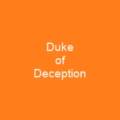What Is Deception?
Deception, in its essence, is a complex web of lies and misinformation designed to mislead others for personal gain. It’s like playing a game where truth becomes a mere facade, and the goal is to keep everyone guessing. But why do people engage in such behavior? Is it always malicious or can there be benign intentions behind it?
Forms of Deception
Deception comes in many guises, each more intricate than the last. From false statements and misleading claims, to outright lies and equivocations, every form serves a purpose—whether it’s to avoid punishment or protect resources, maintain relationships, or simply preserve one’s self-image.
Fabrication
Imagine creating something that appears real but is entirely fabricated. This is the essence of fabrication. During World War II, the Allies used hollow tanks made from wood to deceive German reconnaissance planes into thinking a large armor unit was on the move in one area while the real tanks were hidden elsewhere. It’s like playing a grand illusion where reality and fiction blur.
Distraction
Distraction is another form of deception that works by offering something more tempting to divert attention away from the truth. Think of it as baiting a hook. A security company might publicly announce they’ll ship gold down one route, while secretly taking a different path. This tactic ensures that the real shipment remains hidden and safe.
Camouflage
In nature, camouflage is used to hide or blend in with the environment. Similarly, in deception, it involves hiding truths by making them less noticeable. During World War II, Allied navies used dazzle camouflage painting schemes to confuse observers about a naval vessel’s speed and heading. It’s like wearing a disguise to avoid being recognized.
Disguise
A disguise is an appearance that creates the impression of being someone or something else. Think of passing as more than just dressing up; it involves hiding one’s real manner of speech and behavior. The fictional detective Sherlock Holmes often disguised himself to avoid recognition, much like a chameleon changing its color to blend in.
Deception in Romantic Relationships
In the realm of romantic relationships, deception is surprisingly common. More than 90% of individuals admit to lying or not being completely honest with their partners at some point. The motivations for this can be varied—avoiding punishment, protecting resources, maintaining bonds, or preserving one’s self-image.
Impact on Relationships
Deception impacts the perception of a relationship in profound ways. For the deceiver, it often leads to feelings of detachment and uneasiness, while for the deceived, it can result in decreased trust and intimacy. The longer deception persists, the more damaging its effects become.
Deception in Business and Law
In business negotiations, deceit can be a tempting tool. Price reservation, misrepresentation of interests, fabrication of facts, and omitting relevant information are just some of the ways businesses might deceive for their benefit. In law, deception manifests as torts, misrepresentations, and fraudulent misrepresentations.
Deception in Journalism
Journalistic deception can take passive or active forms. Passive activities include not revealing sources, while active deception involves fabricating stories to gain attention or influence public opinion. The line between truth and fiction is often blurred, making it challenging for readers to discern the real from the fake.
Deception in Government and Religion
Governments use subterfuge, secrecy, propaganda, and misinformation to control narratives and maintain power. Religions too have their share of deception, with practices like Taqiya allowing for strategic concealment of beliefs or actions. Philosophically, the notion of Deus deceptor challenges our trust in reality itself.
Deception in Research
In social research, deception is often employed to obtain honest responses from participants. While ethical guidelines allow for deceptive experiments, they have sparked debate over their use and potential harm to subjects. The underlying concern is whether the deception itself or the unpleasant treatment it entails makes these studies unethical.
Deception in Online Dating
Online dating presents a unique platform for deception. People often lie about physical attributes to appear more attractive, with men lying about height and women about weight. Less attractive individuals are more likely to use deception to enhance their profiles.
Deception in Poker and Beyond
In poker, the concept of a double bluff involves trying to deceive opponents with bad cards, then re-raising when they get suspicious. This is just one example of how deception can be used strategically in various contexts.
Detecting Deception
Detecting deception is challenging due to the lack of reliable indicators and people’s tendency to rely on truth-default states. Non-verbal behaviors often reveal verbal and nonverbal cues about deceit, but discerning these signals requires careful observation and analysis.
Interpersonal Deception Theory
Interpersonal deception theory describes the dynamic process between a sender (deceiver) and receiver (receiver). The actions of deceivers influence receivers’ reactions, revealing verbal and non-verbal cues that can indicate deceit. Detecting deception involves judging non-verbal cues, personality, and context.
Conclusion
Deception is a multifaceted phenomenon with far-reaching implications in personal relationships, business, law, journalism, government, religion, research, online interactions, and even games like poker. Understanding its various forms and impacts can help us navigate the complex world of truth and lies more effectively. Whether we’re deceiving or being deceived, it’s crucial to recognize that every act of deception has consequences that ripple through our lives.
You want to know more about Deception?
This page is based on the article Deception published in Wikipedia (retrieved on December 13, 2024) and was automatically summarized using artificial intelligence.







